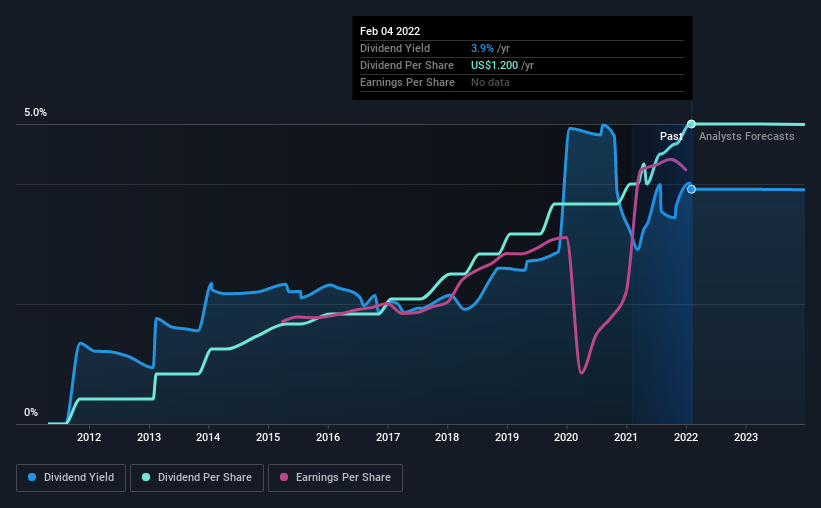There's A Lot To Like About Premier Financial's (NASDAQ:PFC) Upcoming US$0.30 Dividend
It looks like Premier Financial Corp. (NASDAQ:PFC) is about to go ex-dividend in the next 4 days. The ex-dividend date is usually set to be one business day before the record date which is the cut-off date on which you must be present on the company's books as a shareholder in order to receive the dividend. The ex-dividend date is an important date to be aware of as any purchase of the stock made on or after this date might mean a late settlement that doesn't show on the record date. This means that investors who purchase Premier Financial's shares on or after the 10th of February will not receive the dividend, which will be paid on the 18th of February.
The company's next dividend payment will be US$0.30 per share, on the back of last year when the company paid a total of US$1.20 to shareholders. Based on the last year's worth of payments, Premier Financial has a trailing yield of 3.9% on the current stock price of $30.67. If you buy this business for its dividend, you should have an idea of whether Premier Financial's dividend is reliable and sustainable. That's why we should always check whether the dividend payments appear sustainable, and if the company is growing.
View our latest analysis for Premier Financial
Dividends are typically paid from company earnings. If a company pays more in dividends than it earned in profit, then the dividend could be unsustainable. Fortunately Premier Financial's payout ratio is modest, at just 31% of profit.
Generally speaking, the lower a company's payout ratios, the more resilient its dividend usually is.
Click here to see the company's payout ratio, plus analyst estimates of its future dividends.
Have Earnings And Dividends Been Growing?
Businesses with strong growth prospects usually make the best dividend payers, because it's easier to grow dividends when earnings per share are improving. Investors love dividends, so if earnings fall and the dividend is reduced, expect a stock to be sold off heavily at the same time. For this reason, we're glad to see Premier Financial's earnings per share have risen 17% per annum over the last five years.
Another key way to measure a company's dividend prospects is by measuring its historical rate of dividend growth. Premier Financial has delivered 28% dividend growth per year on average over the past 10 years. It's exciting to see that both earnings and dividends per share have grown rapidly over the past few years.
Final Takeaway
From a dividend perspective, should investors buy or avoid Premier Financial? Typically, companies that are growing rapidly and paying out a low fraction of earnings are keeping the profits for reinvestment in the business. This is one of the most attractive investment combinations under this analysis, as it can create substantial value for investors over the long run. In summary, Premier Financial appears to have some promise as a dividend stock, and we'd suggest taking a closer look at it.
In light of that, while Premier Financial has an appealing dividend, it's worth knowing the risks involved with this stock. To that end, you should learn about the 2 warning signs we've spotted with Premier Financial (including 1 which makes us a bit uncomfortable).
We wouldn't recommend just buying the first dividend stock you see, though. Here's a list of interesting dividend stocks with a greater than 2% yield and an upcoming dividend.
Have feedback on this article? Concerned about the content? Get in touch with us directly. Alternatively, email editorial-team (at) simplywallst.com.
This article by Simply Wall St is general in nature. We provide commentary based on historical data and analyst forecasts only using an unbiased methodology and our articles are not intended to be financial advice. It does not constitute a recommendation to buy or sell any stock, and does not take account of your objectives, or your financial situation. We aim to bring you long-term focused analysis driven by fundamental data. Note that our analysis may not factor in the latest price-sensitive company announcements or qualitative material. Simply Wall St has no position in any stocks mentioned.

